How to Milk a Cow by Hand with Videos and Images
Here you will learn how to milk a cow by hand. Unless you have more than 15 cows, it is not worth the cost of buying expensive milking machines. Milking a cow by hand seems difficult at first, only because you haven't mastered the technique. Once you know what to do, and how to do it, then milking cows is something that you could probably do in your sleep. But until you get to that stage there are a couple of things you need to get right first.The most important aspect of leaning how to milk a cow is that everything should be clean; your hands before you start hand milking, the teat that you are going to be pulling on, the bucket that you are going to be collecting the milk in, and the final receptacle you are going to use to store the milk in.
If you are not careful about hygiene at any stage, it will affect the quality of the milk, and worse still, your health. You can use a weak bleach solution to clean your buckets out after use, but remember to rinse well with hot water afterwards and to turn the buckets upside down when not in use to make sure that they are free of dust and insects when you use them next.
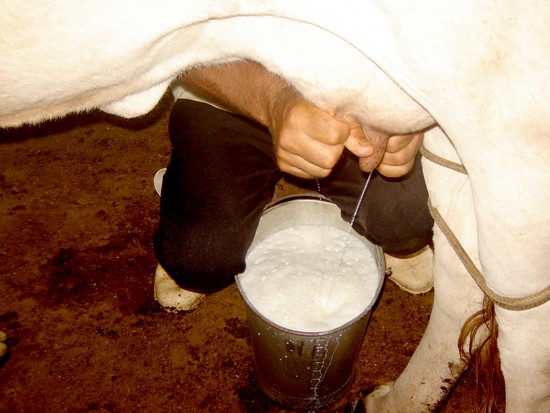
The next thing when you learn how to milk a cow is to wash both the cow, her teats and your hands before you begin. You don't have to give her a full wash, but it is advisable to wash and brush the side of the cow where you will be sitting to prevent any debris falling into the bucket. And definitely your hands and udder should be cleaned before you begin hand milking cows.
All of these can be cleaned using warm water. It is then important to dry each udder off and a disposable paper towel is best to prevent the spread of bacteria. Your hands can also be dried off in the same manner using a new paper towel.
No matter how gentle your milking cow is in the field, she has the ability to kick like a mule if she can. Therefore, it is best to treat Daisy with a healthy respect and to tie her back legs together with a strip of cloth or leather when you begin milking her. Of course, there is how to milk a cow the easy way, but tying her up, or how to milk a cow the difficult way and have her kick you and your full milk bucket just as you were about to call it a day. It's your choice, but certainly wiser to restrain her right in the beginning.
When learning how to milk a cow you should also learn about looking for any signs of mastitis in your cows. This is a painful illness that can occur when a cow has not been able to let down her milk regularly, or has been milked with dirty hands, had her teats wiped with a cloth that wasn't clean, or to the prevalence of flies.
You should also examine the teats to make sure that they are not chapped or cracked where bacteria can sit and breed. Hand milking a cow that has mastitis can be tested by looking at the foremilk.
If you take a small sample from the teat and examine it against a dark container if the milk is flaky, has small clots, or is very watery then this means that your cow could have mastitis and the milk is not suitable for human consumption. You should then call your vet in for a more professional opinion and a course of antibiotics will do the trick.
So now finally, you will get to read more on how to milk a cow. Place a milking stool on the right side of the cow and place the bucket firmly between your knees so that the bucket is stable and cannot be accidentally knocked over by any movement of the cow. You should try and get under the cow as much as possible so that the distance between the teat and the bucket is minimized.
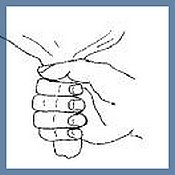
The technique of milking cows by hand all comes down to how you hold the teat. The teat should always be grasped by the whole hand with your thumb and forefinger around the top of the teat. By doing this you are preventing the milk from going back into the udder.
Then, enclose the rest of the teat with your other fingers, one by one. This then presses the milk out. In order to get a good flow of milk going you then release the grip of your thumb and forefinger on the teat to allow the milk to flow down the teat again from the udder, and repeat the process of enclosing and squeezing the teat with the rest of your fingers as seen in the diagram.
How to milk a cow is not difficult as I said, but it does mean mastering this technique. When you start milking your cows start with the front teats first, and try milking them with the above technique with both hands on the two front teats.
When they are nearly empty, then start on the back two teats. When they are nearly empty, you can then come back to the front teats and finish off your milking by seeing if you can a little bit of whatever is left in these front teats. Once you have the technique mastered your hand milking will go much better once you have a rhythm going and using both hands.
So, what are you going to do with all that milk once you have milked your cow? If you are thinking about making cheese, you will probably be needing some Cheese Making Recipes.
Here is a video for you to watch on how to milk a cow by hand, and how to milk a cow with a machine.
THE BASICS OF HOW TO MILK A COW
HOW TO MILK A COW BY HAND
HOW TO MILK A COW BY MACHINE
Add your Own Comments on How to Milk a Cow !
We have lots of pages where you can contribute to throughout this homesteading website. We love hearing from our readers, and hope you will be one of those we hear from too. Look around our homesteading website. If you have any comments, or questions, please add them by using this submission page below. We would love to have your contributions!
Leave a Comment
Do you have anything that you would like to add after reading this page? We would love to hear your thoughts. If you can add additional information to what has been written here you will be adding value to the website! No need to have any special skills - just type and submit. We will do the rest!
Other Comments
Click below to see comments from other visitors to this page...
what are the disadvantages of milking machines? 




What are the disadvantages of milking machines? I was wondering if you could give me the answer to this question.
Also, can you tell me which are the …
How hard is it to milk a cow? Not rated yet
I was just wondering about milking cows. Is it hard to milk a cow because my aunt lives near some farms and they are a lot of farms where she lives and …
How to Prevent Dirt from Getting Into your Milk when Milking Not rated yet
Even though a milker may be careful, small particles of dirt, hairs, etc., will fall into the milk pail. It is true that the milk is strained afterward, …






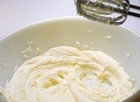
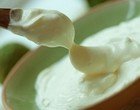

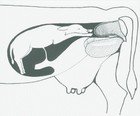

New! Comments
Do you have something of value to add? Leave me a comment in the box below.